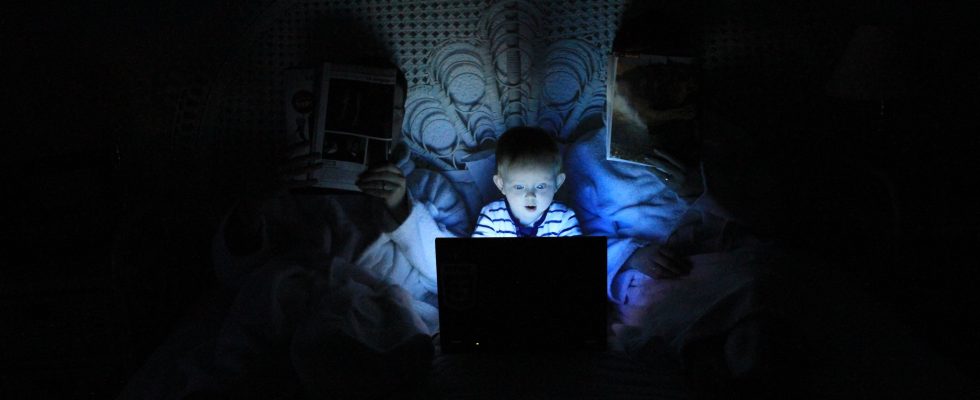Very young children, obsessed with what is happening in the image. A report published this Wednesday, April 12 by Public health France alert on the time spent in front of screens in toddlers, a phenomenon on the rise and at risk for the development of the latter, according to the institution.
To measure exposure to screens, Public Health France followed around 18,000 children, from birth to age 5, and conducted interviews and visits to their families, in a program called ELFE. As a result, on average, 2-year-old children spent 1 hour a day on screens, 1h20 at 3 and a half years old, and 1h34 at 5 and a half years old, according to the statements collected.
Times contrary to the recommendations in force. The World Health Organization (WHO) recommends not exposing children under 2 years old to screens, then limiting the time to 1 hour a day between 2 and 5 years old. In 2019, the High Council for Public Health (HCSP) recommended for France to limit access to screens to children under 3 years old, in the absence of an adult.
Potentially harmful effects
In recent years, scientific literature has shown that some children, often in front of screens, are also more prone to health problems, without however making it a major danger. “Studies show in particular an increased risk of overweight and obesity, and difficulties in the development of language and cognitive development associated with the use of screens”, specifies Public Health France.
Adverse effects occur especially when the screen replaces education. “The sometimes negative effects of screens do not necessarily reflect an intrinsic toxicity, but simply the fact that they decrease the time spent on more useful activities. All of this leads to the conclusion that screens are neither evil incarnate nor a panacea, and that we must promote quality content and reasoned uses”, summed up the great specialist in the cognitive development of children Franck Ramus, in our columns, at the end of 2022.
All children are not exposed in the same way: “on the whole, screen time was higher in families with immigrant origins, or a low level of education of the mother. Regional disparities were also observed”, specifies theInsermin a statement – the medical research institution participated in the study.
Thus, children whose mother has a secondary school level spend 45 minutes (at 2 years old) and 1h15 (at 5 and a half years old) more in front of screens than children whose mother has a level of education greater than or equal to baccalaureate. + 5. On the other hand, the differences between boys and girls are small, of the order of a few minutes per day at 5 and a half years.
And in the future?
These figures could be underestimated: “As national recommendations encourage children not to be exposed to screens or to limit their exposure, the parents surveyed may be led to underestimate or under-declare their child’s screen time. ” And the data was collected until 2017, so before the societal changes caused by the health crisis.
And in the future? “Portable screens such as the smartphone and the tablet having developed strongly during the 2010 decade, we could expect an increase in screen time, but this would be to ignore that the prevention messages intended for young children have also multiplied over this period”, nuance Public Health France.
